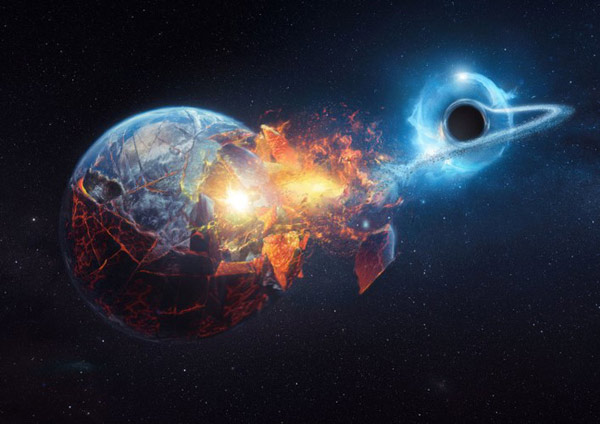One of the most important goals of astronomy is to accurately measure the total amount of matter in the universe. It is a very difficult task even for the most advanced mathematicians. Recently, a group of scientists from the University of California at Riverside (USA) performed such calculations.
The research has been published in the Journal of Astrophysics (USA). The team of scientists concluded that matter as we know it makes up about 31% of the total amount of matter and energy in the universe. The remaining 69% is dark matter and energy.
Black matter

Matter as we know it makes up about 31.5% of the total amount of matter and energy in the universe.
“If all the matter in the universe is evenly distributed in space, there will be on average only about six hydrogen atoms per cubic meter,” said Mohamed Abdullah of the University of California, who has directed the research.
However, the scientist points out that most of the matter is in fact dark matter. “So in reality we cannot speak of hydrogen atoms, but of matter whose nature cosmologists do not yet understand,” said Mohamed Abdullah.
Dark matter neither emits nor reflects light. It is therefore very difficult to detect dark matter. However, the existence of dark matter is revealed through the gravitational effects it causes.
In this way, scientists explain the anomalies in the rotation of galaxies and in the movement of clusters. Scientists are still trying to answer the question: what is the true nature of dark matter and what creates it? However, after years of research, research on this topic is still “pending.”
Scientists believe that dark matter in the universe does not have baryon characteristics (baryons are compound particles with semi-integer spins). Dark matter can be made up of undiscovered subatomic particles.
However, since dark matter does not interact with light in the same way as normal matter, we can only observe dark matter through gravitational effects. Most experts believe that dark matter is present everywhere in the universe, strongly affecting the structure and evolution of the universe.
One of the good techniques for determining the total amount of matter in the universe is to compare the observed number of galaxies with the selected volume units, he adds, and mathematical modeling. Because today’s galaxies are made up of matter that has changed over billions of years due to gravity, predictions about the amount of matter in the universe are possible.
“Greater amounts of matter will create more galaxy clusters. The challenge for us is to measure the number of clusters to perform other calculations. However, it is difficult to accurately measure the mass of a cluster, because most matter is dark matter; therefore, we cannot see dark matter through the telescope, ”Abdullah said.

Determination of cosmic mass
First, the team developed a tool to measure the masses of galaxies. Then the scientists applied this tool to the data collected by Sloan Digital Sky Observatory (USA). Finally, they perform calculations and simulations to determine the total amount of matter in the universe.
“We were able to take one of the most accurate measurements in the history of this type of research. In addition, the method we use gives the same results as the other methods ”- said Professor Gillian Wilson (University of California).
“Our biggest technical advantage is that we can determine the masses of each cluster individually and not depend on intermediate statistical methods” – Mr. Anatoly Klypin, expert in mathematics simulation, co-author of the study, affirms it.
By combining the measurements of many groups with different techniques, scientists have determined that the matter we know represents about 31.5% (1.3% error) of the total amount of matter and energy in the universe.
Cosmologists believe that only 20% of this matter is ordinary matter (baryonic matter), including galaxies, stars, or atoms. The rest – 80% of all matter – is dark matter.


